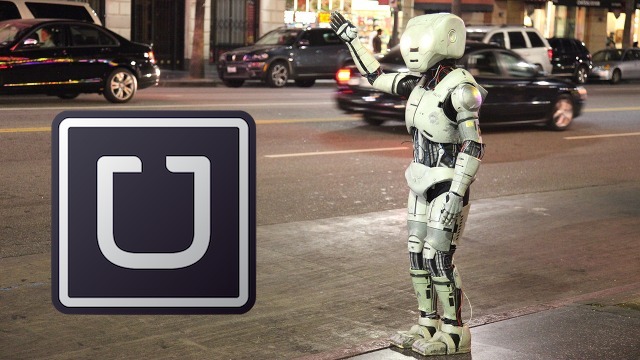We told you it was coming, and here it is: Last week, my colleague Josh Constine reported that Uber was preparing to release an API that would enable its on-demand ride-hailing service to be integrated into a number of third party apps. Today, the company is announcing its API will become available to app developers, with 11 launch partners already signed up.
For Uber, the introduction of its API is designed to increase reach and get it in front of lots of new potential users. The company is in 150 cities and nearly 50 countries around the world, but there are untold number of users who might not have tried its service. Showing up in other apps that those users already have installed is a simple way to introduce them to getting an Uber on-demand.
This isn’t the first time Uber has made its service available to third parties: In May, it became integrated with Google Maps, enabling users of that app to instantly request one of its drivers. But today’s announcement represent a much more ambitious vision for how widely it could be distributed amongst other apps.
To that end, Uber is making its API generally available for any developers who want to find interesting ways to embed the service into their apps. That means any app that can send a destination address to Uber will be able to display pickup times and fare estimates without users having to leave their apps. For a small set of select partners, Uber will also allow users to request a car without having to open its own app.
It’s not just offering the API to third-party developers, but incentivizing them to use it. to get its service on as many apps as possible, it is launching an affiliate program to offer up free credits to developers who get people using its service.
While it’s trying to appeal to as many app developers as possible, to start Uber is launching with 11 API partners that have already committed to introducing Uber to their users. Those apps include Expensify, Hinge, Hyatt Hotels & Resorts, Momento, OpenTable, Starbucks, Tempo, Time Out, TripAdvisor, TripCase, and United Airlines.
“We think this is huge for us,” Uber SVP of business Emil Michael told me in a phone interview, then repeated, “This is huge for us.”
In all, he believes there are probably about 200 million users who have downloaded those initial launch apps. In order to get passengers on-board, Uber will also be offering new users up to $30 when they sign up through those apps.
For Uber and its partners, the API and the ability to be offered on third-party apps is all about simplicity. It’s about being able to offer a seamless end-to-end experience for diners, or travelers, or even just people who are going on a date with someone new.
With its launch partners, Uber will be launching with a variety of different use cases. Users who have made a reservation for dinner with an app like OpenTable will be able to book a car to take them there. Or those who are flying United will be able get a car to take them to the airport, and if they’re staying at a Hyatt Hotel, Uber will be available to take them there. And, of course, tying Uber into a smart calendar app like Tempo will ensure that users make it to their meetings on time.
Uber’s launch partners have agreed to have Uber as their exclusive ground transportation option, and future developers will be barred from using competitive APIs as well. Still, Michael believes Uber is the only service right now with enough scale to strike the type of global partnerships it has, anyway.
“We’re in over 150 cities and nearly 50 countries… [We’re] touching every inch of every city, every hour of every day,” he said, and that kind of scale matters, especially when you’re dealing with airlines like United, which serves 40 or 50 different countries, or a brand like Starbucks, which is available around the world.
With a fresh billion and change in the bank, it’s no wonder Uber wants to be in more places and on more apps. After all, it’s trying to get as many users as possible on the service, and the best way to do that is to be available through the apps people are already using, in addition to its own.
